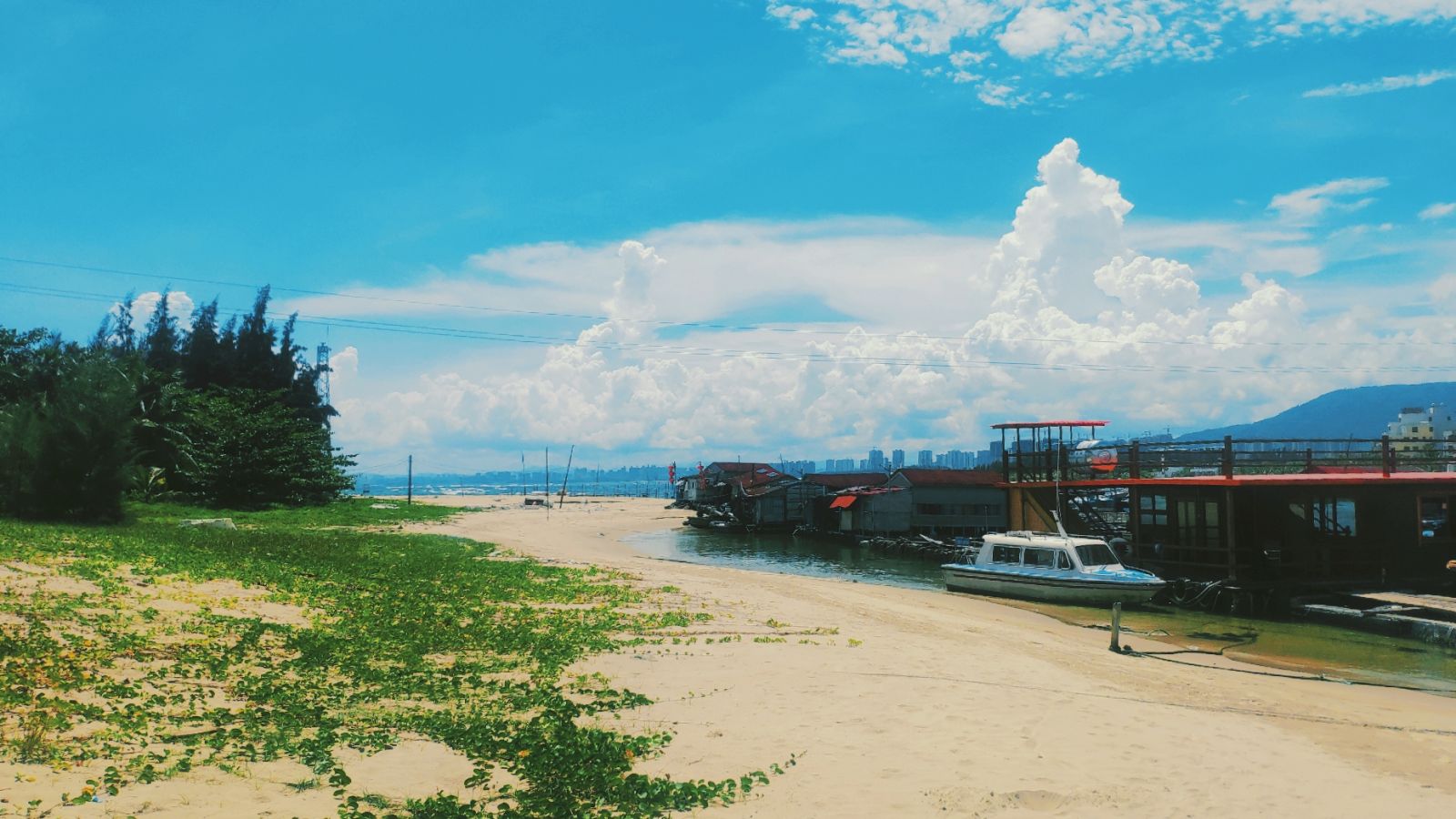Chinese Name: 南丫岛 Pronunciation: nán yā dǎo
Area: 14 square kilometres
Best Visiting Time: April to November
Population: 6,000
Admission Ticket Fare: Free
Opening Hours: All Day
Address: Lamma Island, Hong Kong Special Administrative Region, China.
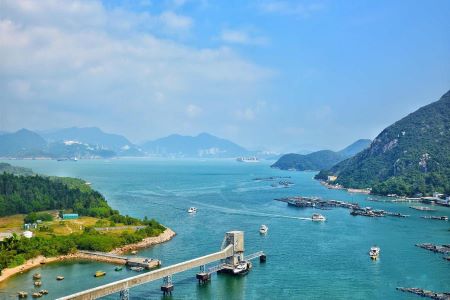
Lamma Island was formerly known as "Boliao Zhou". During the Tang and Song dynasties, Lamma Island served as a transit point for foreign merchant ships on their way to Guangzhou to facilitate their trade in goods there. The Chinese character for Lamma is “南丫”。” 南” means south. The name "Lamma" was given to the island because it is located in the south of Hong Kong and is shaped like the Chinese character "丫", which gradually replaced the name "Boliao Zhou". Relics from the Neolithic Age to the Ming and Qing dynasties have been excavated from Sham Wan on Lamma Island. Lamma Island is the third largest island in Hong Kong after Lantau Island and Hong Kong Island in terms of Hong Kong area. Administratively it is one of the 18 districts of Hong Kong, the Islands District.
Lamma Island is the place where Chinese and Western cultures interact with each other and has an abundant artistic atmosphere. The fresh air, beautiful coastal scenery and delicious seafood add to the charm and vitality of the island which attracts many visitors to the area for excursions and hikes. The love of the island has led to a number of city dwellers and foreigners moving here, creating a non-indigenous community. Bicycles are the main transportation on the island. There are no skyscrapers on the island.
Chow Yun-fat, born on May 18, 1955 on Lamma Island, Hong Kong, is a famous Hong Kong film and television actor and a photographer. At the Hong Kong Film Awards he won the Best Actor three times in 1987, 1988 and 1990. He was awarded the Silver Bauhinia Star (The Silver Bauhinia Star is a medal awarded by the Government of Hong Kong to a leader in public affairs and voluntary work over a long period of time.) by the Hong Kong Special Administrative Region Government in 2003
John Romer is a famous foreign amateur reptile and amphibian zoologist in Hong Kong. He discovered a new species in a cave on island in 1952 and named it Romer's Tree Frog. John Romer has carried out a 32-year research career in Hong Kong. During 32 years, he has discovered four other new species and nearly 20 additional species of Hong Kong amphibians and reptiles.
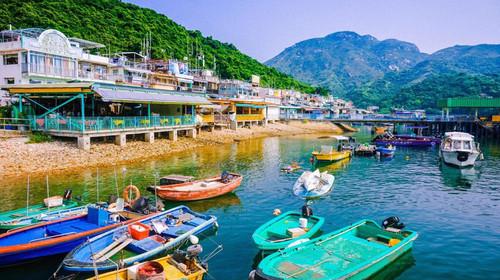
Yung Shue Wan Main Street area is the main residential area of the island, with shops, bars, cafes, and restaurants on both sides of the main street. There are many shops selling various colourful handicrafts and foreign restaurants in Yung Shue Wan Main St. In here, you can slow down, relax, and enjoy the island's leisurely atmosphere. Lamma Island has been a community inhabited by foreign nationals for many years. Here the East meets the West, making this traditional fishing village diverse and full of vitality.
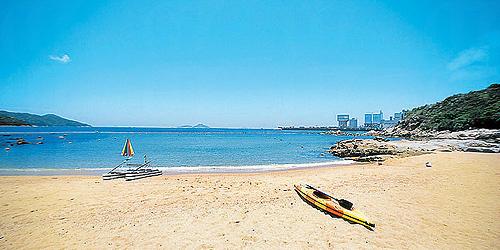
Hung Shing Yeh Beach is the most popular beach on the island. It is about a 30-minute walk from Yung Shue Wan Pier. The seawater in Hung Shing Yeh Bay is clear and warm. You can swim and sunbathe here. There are also several facilities for changing and washing bodies. There are also distinctive restaurants on the beach for people to taste while enjoying the beach view. Barbecue is a must-have spot on the beach. Travelers could bring their own food and just use the barbecue oven. Or they could order on site and enjoy the barbecue with their friends and families.
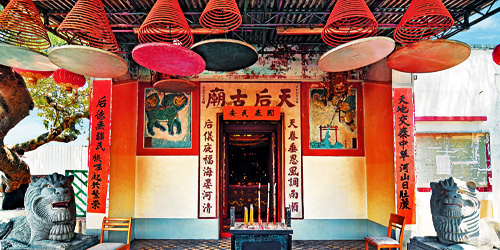
There are three Tin Hau temples have been built on the island, with Tin Hau Temple near Sok Kwu Wan built in 1826, Luzhou Tin Hau Temple built in 1868 and Yung Shue Wan Tin Hau Temple built in around 1876. Legend has it that Tin Hau, with her boundless power and compassion, was the goddess of protection for the people of the sea. The Luzhou Tin Hau Temple houses a bronze bell and incense case made during the Emperor Tongzhi period of the Qing Dynasty, as well as a display of ancient whale bones.
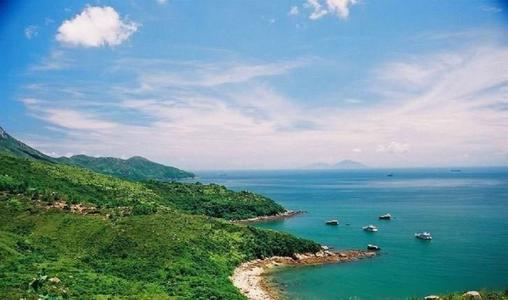
Sok Kwu Wan is another major village located in the south of Lamma Island. Unlike Yung Shue Wan, it preserves the simple and traditional fishing village atmosphere where you can sign up to visit the Lamma Fishersfolk’s Cultural Village and set sail to experience the traditional fishing customs. Sok Kwu Wan has wonderful scenery. It has a hiking trail - the Family Trail - which connects to Hung Shing Yeh Bay. The trail takes about 50 minutes to complete and ends at Tin Hau Temple in Sok Kwu Wan.
Sok Kwu Wan is a delightful place to visit, with a number of open-air restaurants built on stilts above the bay. Here you can enjoy seafood delicacies such as stir-fried crab with chilli, steamed prawns with garlic, fried squid and steamed fish with ginger and onion all of which are extremely popular and delicious.
The best visiting time to the island is from April to November in summer and autumn. Spring is the off-season for tourism in Hong Kong. You can avoid the flow of people if you choose to travel at this time. In summer you can swim and take a vacation to cool off. In autumn, the weather is cool, and you can feel the slow pace of life on the island. In winter Lamma Island has warm sunshine and you can enjoy the peace and quiet. The typhoon season is from May to September each year, so tourists need to make a safe travel plan.
Yung Shue Wan→ Lamma Winds →Hung Shing Yeh Beach→ Tin Hau Temple →Sok Kwu Wan
External transport to Lamma Island relies entirely on ferries. There are two piers at Yung Shue Wan and Sok Kwu Wan on the island which are on the north side and south side of the island. Tourists can, if they wish, depart from any pier, one to arrive in and the other to leave. Visitors can take the ferry boat at Central Pier 4.
From Central to Yung Shue Wan it costs 14.5 Hong Kong dollars from Monday to Saturday and 20 Hong Kong dollars on Sunday. It sets off every half hour and takes 25 minutes.
From Central to Sok Kwu Wan it costs 17.5 Hong Kong dollars from Monday to Saturday and 25 Hong Kong dollars on Sunday. It sets off every half hour and takes 35 minutes.
You can take 2、4、13、15、15C、18、18P、23A、25、26、46X、M49、66、91、M590、720、M722 (New territories bus).
You can take 1、3B、5、5B、6、6X、7、10、11、12、37A、37B、40M、70、71、75、90、90B、92、96、97、780、788、A11、A12、E11 (City Bus).
You can take 101、104、109、111、113、115、603、619、681、690、692、905、914、930、960、961、962、962X、968、968X、969 (Cross Harbour Tunnel Route).
You can take MTR Island Line or MTR Tsuen Wan Line and get off at Central Station.
You can take MTR Tung Chung Line and get off at Hong Kong Station.
You can take MTR Airport Express to get off at Hong Kong Station, and take the MTR Airport Express from the airport to Central in just 24 minutes.
Chinese: 请带我去中环。English: Please take me to Central. (qǐng dài wǒ qù zhōng huán)
If you go to Central from Hong Kong International Airport, it takes about 35 minutes (280 yuan).
If you go to Central from Tsim Sha Tsui, it takes about 15 minutes (65 yuan).
If you go to Central from Hong Kong Disneyland, it takes about 25 minutes (200 yuan).
If you go to Central from New Territories, it takes about 20 minutes (135 yuan).
If you go to Central from Hong Kong Ocean Park, it takes about 12 minutes (60 yuan).
